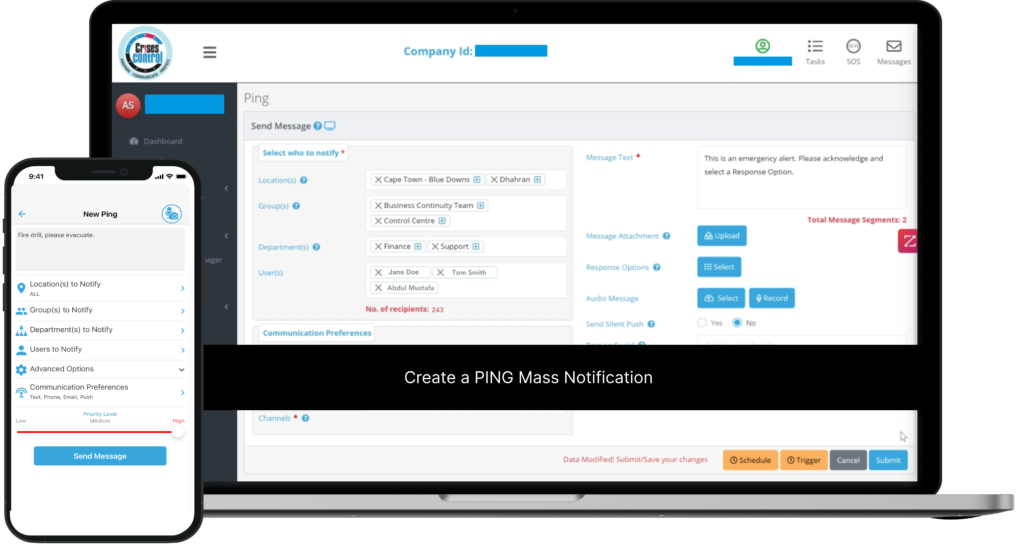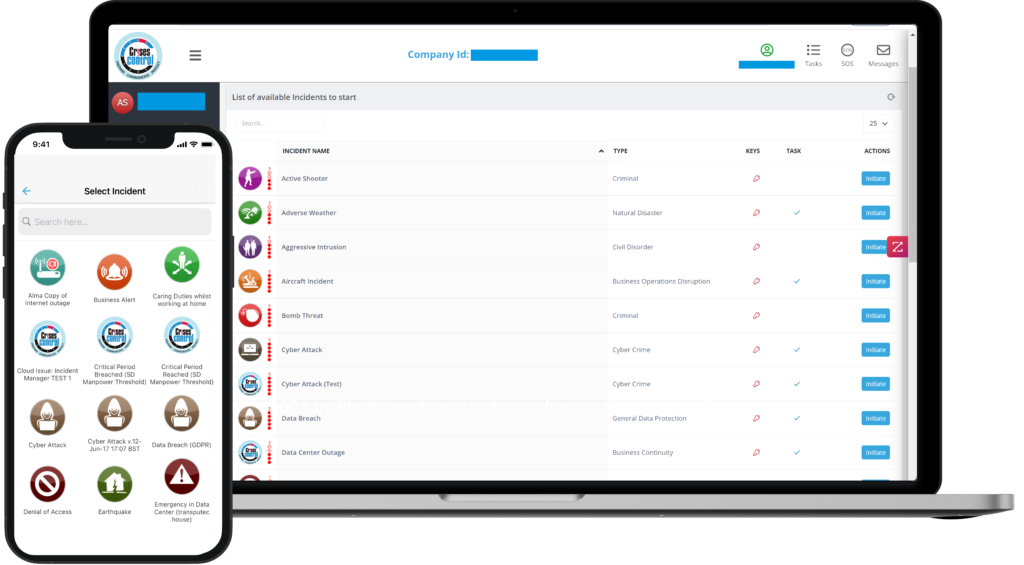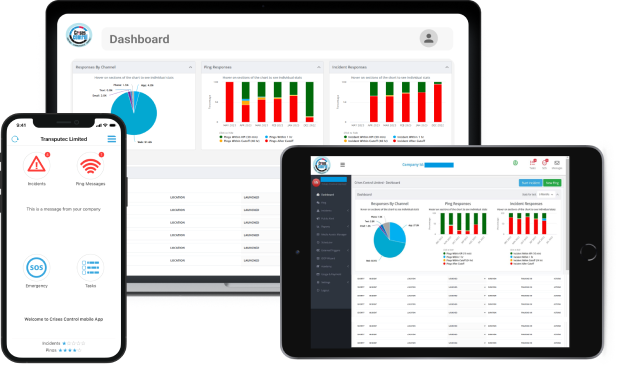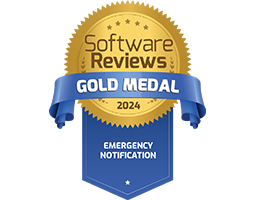Written by Anneri Fourie | Crises Control Executive
A major IT failure shuts down your entire network. A chemical spill forces an urgent evacuation. A cyberattack threatens customer data. In moments like these, every decision matters. But instead of an immediate, coordinated response, teams scramble to track down the right people, confirm the issue, and figure out what to do next.
For many businesses, outdated crisis management methods, like manual phone trees, scattered communication channels, and unclear workflows, waste precious time. Delays in response can mean operational downtime, financial loss, reputational damage, and, in some cases, risks to safety.
Incident Management Software is designed to eliminate these delays. By automating alerts, centralising communication, and tracking response actions in real time, it ensures a faster, more organised approach to handling crises. In this blog, we’ll explore how this technology helps businesses reduce response times, improve coordination, and minimise damage.
Why Slow Response Times Cost Businesses More Than They Realise
A delayed response doesn’t just prolong the crisis, it multiplies the impact. Consider the consequences of slow action:
- Safety Risks: Delayed communication can slow evacuations, medical response, or security interventions.
- Operational Disruptions: IT failures, supply chain breakdowns, or equipment malfunctions can halt operations, affecting productivity and revenue.
- Reputational Damage: Poor crisis handling can erode customer trust, investor confidence, and regulatory compliance.
- Financial Losses: Every minute of downtime costs money.
Now, imagine a business experiencing a severe cyberattack. If it takes 20 minutes for IT to realise what’s happening, another 30 minutes to escalate the issue to leadership, and an hour before response measures are activated, that’s nearly two hours of unchecked damage, potentially exposing customer data and leading to hefty fines.
The right incident management system ensures teams act within minutes, not hours, significantly reducing risk.
How Incident Management Software Improves Crisis Response
Incident management software streamlines emergency response by:
- Sending automated mass notifications to alert key personnel instantly.
- Providing real-time collaboration tools for fast decision-making.
- Structuring response workflows to prevent confusion.
- Integrating with existing IT, security, and communication systems.
Let’s break these benefits down further.
1. Instant Alerts: Reaching the Right People, Fast
In a crisis, delays often start with communication. Traditional methods, phone calls, email chains, or messaging apps, are slow, unreliable, and prone to human error. A single missed message can lead to serious consequences.
How Incident Management Software Helps
- Automated mass notifications ensure key people are alerted within seconds.
- Multi-channel messaging (SMS, email, push notifications, voice calls) ensures no one is left out.
- Geo-targeting allows alerts to be sent based on a person’s location, ensuring messages are relevant.
- Two-way communication enables recipients to acknowledge alerts and provide updates.
How Crises Control Helps
With Ping Mass Notification, organisations can send instant alerts across multiple channels, ensuring critical messages reach the right people. The system tracks delivery and response rates in real time, so there’s no uncertainty about whether a message was received.
2. Real-Time Communication: Keeping Everyone on the Same Page
During an emergency, fragmented communication leads to confusion. Separate email threads, individual phone calls, and scattered messages slow everything down.
How Incident Management Software Helps
- Live chat and voice calls allow teams to collaborate instantly.
- Centralised incident logs keep all stakeholders informed with real-time updates.
- Role-based access controls ensure only authorised personnel can view sensitive information.
How Crises Control Helps
The real-time collaboration platform within Crises Control enables seamless communication. Whether through instant messaging, voice calls, or emails, teams can coordinate effectively. All updates are logged in a centralised dashboard, ensuring clarity in decision-making.
Interested in our Ping Mass Notification Software?
Efficiently alert everyone in seconds at scale with our Mass Notification Software – PING, get the message out fast and ensure rapid response and recovery.

3. Task Automation: Structuring the Response for Maximum Efficiency
In a crisis, every second spent figuring out next steps is a second wasted. Without a structured approach, teams risk duplicated efforts, overlooked tasks, and confusion over responsibilities.
How Incident Management Software Helps
- Pre-configured workflows assign tasks automatically based on incident type.
- Task tracking dashboards provide a real-time view of response progress.
- Automated reminders ensure critical actions aren’t forgotten.
How Crises Control Helps
The Task Manager Module automates incident response workflows. Instead of manually assigning tasks, the system ensures that the right people take action immediately. Checklists and progress tracking tools keep teams accountable, so nothing falls through the cracks.
4. Seamless Integration: Connecting Existing Systems for Faster Response
Most businesses already have IT, security, and operational tools in place. But if these systems don’t communicate, they create silos that slow down response times.
How Incident Management Software Helps
- API integrations connect security, HR, and IT systems for a seamless response.
- Automated triggers enable responses based on real-time data (e.g., a fire alarm automatically triggering evacuation alerts).
- Cloud-based accessibility ensures response efforts continue even if local IT infrastructure is compromised.
How Crises Control Helps
With API connectivity, Crises Control integrates with existing security, HR, and IT systems. This allows for automated incident triggers, ensuring that critical actions, like lockdown procedures, IT system shutdowns, or emergency alerts, happen without delay.

Interested in our Incident Management Software?
Customise your Crisis Incident Management Software to meet your specific needs with our flexible tools & stay connected and informed during the crisis and incident management process
Conclusion: Be Proactive, Not Reactive
Emergencies are unpredictable, but your organisation’s response doesn’t have to be. Delayed action can lead to financial loss, reputational damage, and safety risks. Businesses that rely on outdated crisis management methods will always struggle to respond effectively.
By implementing incident management software, organisations can:
- Instantly alert the right people, through the right channels.
- Enable real-time collaboration for faster decision-making.
- Automate workflows to ensure a structured response.
- Integrate with existing systems for seamless emergency management.
Crises Control offers a comprehensive, cloud-based Incident Management Solution that helps businesses respond faster, smarter, and more effectively.
Don’t wait until disaster strikes to discover gaps in your response plan. Contact us today to book a free personalised demo and see how Crises Control can help your business reduce response time and improve crisis management.
Request a FREE Demo








